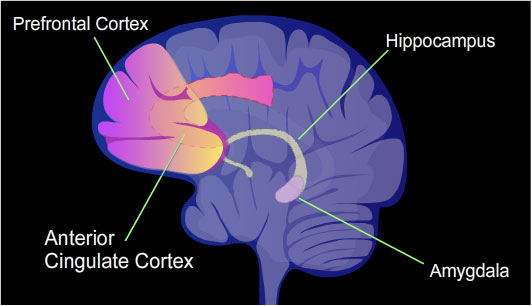Sanika Week 14: The Shaping of Memories
The Shaping of Memories
Memories are one of the most integral aspects of humans. They shape who we are and give us opportunities to learn, experience, and connect with others.
But how are memories formed?
To answer this question, we have to look at the three types of memory processes our brain contains: sensory register, short-term memory, and long-term memory.
The first memory process of sensory register is when the brain gets information from its surrounding environment. This process consists of the mind collecting “information passively through visual and auditory cues, known respectively as ‘iconic’ and ‘echoic’ memory” (Lesley University). An example of iconic memory is when you are still able to see an image after you look away from seeing it on an electronic device. Likewise, echoic memory is when you ask someone to repeat themselves during a conversation, only to grasp what they said a second later.
The second memory process, short-term memory, involves two parts: “the traditionally termed ‘short-term memory’” (Lesley University) and “working memory.” Short-term memory is when the brain temporarily stores information so it can be repeated. For instance, this can be seen when you remember a person’s name after they introduce themselves. On the other hand, working memory is when the brain stores information with the intention of manipulating it. This can be seen when you try to remember a number while solving a math problem.
The final memory process is long-term memory in which information stays in the brain for an extended period of time. However, this period of time can range from only a day or a week to also a lifetime. These memories form when the hippocampus obtains information from the working memory and starts to change the brain’s physical neural wiring. As long as these new connections between neurons and synapses stay in use, the memories remain.

Wikipedia – "Brain Regions Involved in Memory Formation"


Hi Sanika! I found your blog to be very informational! I actually learned about this in psychology. I like how after you opened your text, you followed up with a question, guiding the topic of your blog. Covering the way memories are formed through sensory register, short-term memory, and long-term memory, really helps the audience understand the different aspects of our brains' processes. I like how you added examples because it gave the complex definitions a simpler way of understanding how memories are formed. Overall, your blog was well-structured and very organized, it was very insightful and easy to understand!
ReplyDeleteHi, Sanika. I liked the well structured form of your blog, starting with the explanatory introduction describing the basic idea of what a memory is. The question “But how are memories formed?” flowed well between the introduction and the following section of the blog. Also, the use of examples like “sensory register,” “short-term memory,” and “long-term memory” and credible sources such as Lesley University serve to reinforce your blog. In addition, those terms were well explained with the information of those credible sources in each of the paragraphs. The structure of the blog also aided with the readability of the blog and made the flow/train of thought more understandable.
ReplyDelete